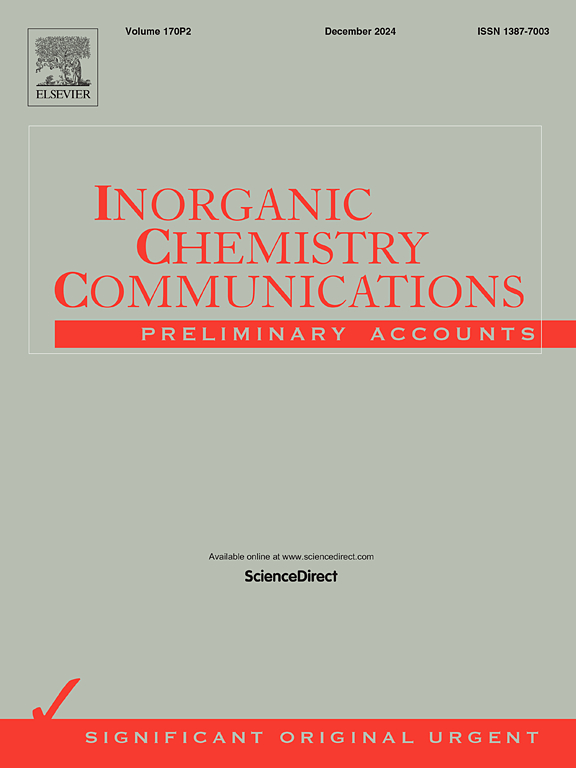二维PdSeO3光催化水裂解性能的计算研究
IF 4.4
3区 化学
Q1 CHEMISTRY, INORGANIC & NUCLEAR
引用次数: 0
摘要
光催化水裂解制氢在可持续能源的发展中发挥着积极的作用,而二维材料在这一领域具有相当大的优势。在这项研究中,我们发现二维PdSeO3是一种很有前途的水分解材料,具有优异的稳定性和作为间接带隙半导体的功能,带隙为2.92 eV。该单层材料具有较低的杨氏模量(19.16 ~ 22.16 N/m),具有显著的柔韧性。带隙中心位于- 5.46 eV,合适的带边分别位于- 4.00 eV和- 5.46 eV。此外,该单层膜的光学吸收系数为~ 105 cm−1,覆盖了紫外线和部分可见光,太阳能制氢效率为8%。最后,我们使用绝对电负性方法估计带边缘,发现这种方法明显低估了带边缘和PWS性能。本文章由计算机程序翻译,如有差异,请以英文原文为准。

Computational study of the photocatalytic water splitting performance of two-dimensional PdSeO3
Hydrogen production through photocatalytic water splitting plays an active role in the development of sustainable energy, and two-dimensional materials offer considerable advantages in this domain. In this study, we reveal that two-dimensional PdSeO3 is a promising material for water splitting, exhibiting excellent stability and functioning as an indirect bandgap semiconductor with a bandgap of 2.92 eV. The monolayer demonstrates remarkable flexibility with a low Young’s modulus ranging from 19.16 to 22.16 N/m. Besides, its band gap center is positioned at −5.46 eV, with suitable band edges at −4.00 eV and −5.46 eV, respectively. Additionally, the monolayer displays a strong optical absorption coefficient of ∼105 cm−1, covering both ultraviolet and a portion of visible light, with a solar-to-hydrogen efficiency of 8 %. Lastly, we estimate the band edges using the absolute electronegativity method, revealing that this approach can significantly underestimates both the band edge and PWS performance.
求助全文
通过发布文献求助,成功后即可免费获取论文全文。
去求助
来源期刊

Inorganic Chemistry Communications
化学-无机化学与核化学
CiteScore
5.50
自引率
7.90%
发文量
1013
审稿时长
53 days
期刊介绍:
Launched in January 1998, Inorganic Chemistry Communications is an international journal dedicated to the rapid publication of short communications in the major areas of inorganic, organometallic and supramolecular chemistry. Topics include synthetic and reaction chemistry, kinetics and mechanisms of reactions, bioinorganic chemistry, photochemistry and the use of metal and organometallic compounds in stoichiometric and catalytic synthesis or organic compounds.
 求助内容:
求助内容: 应助结果提醒方式:
应助结果提醒方式:


